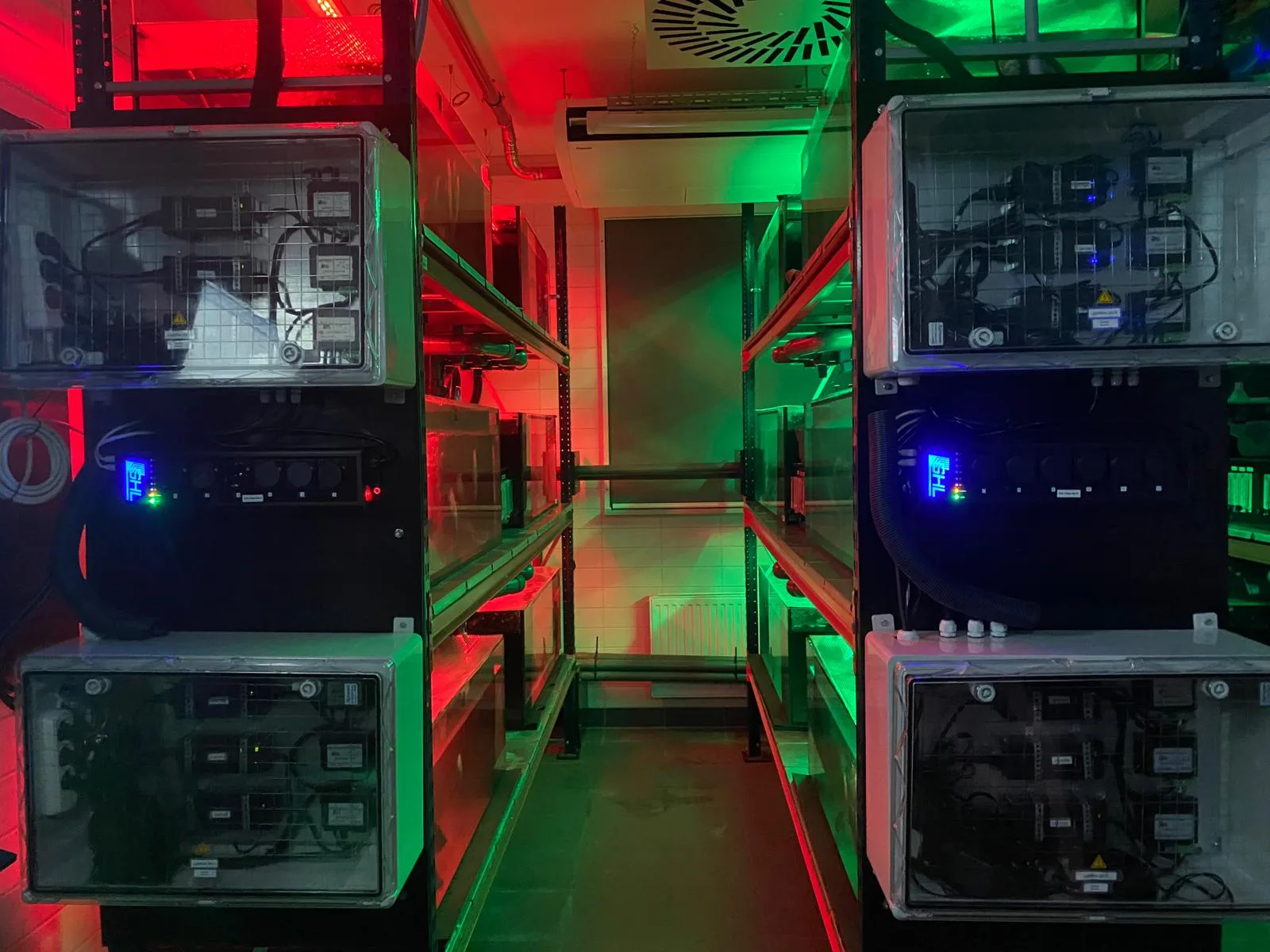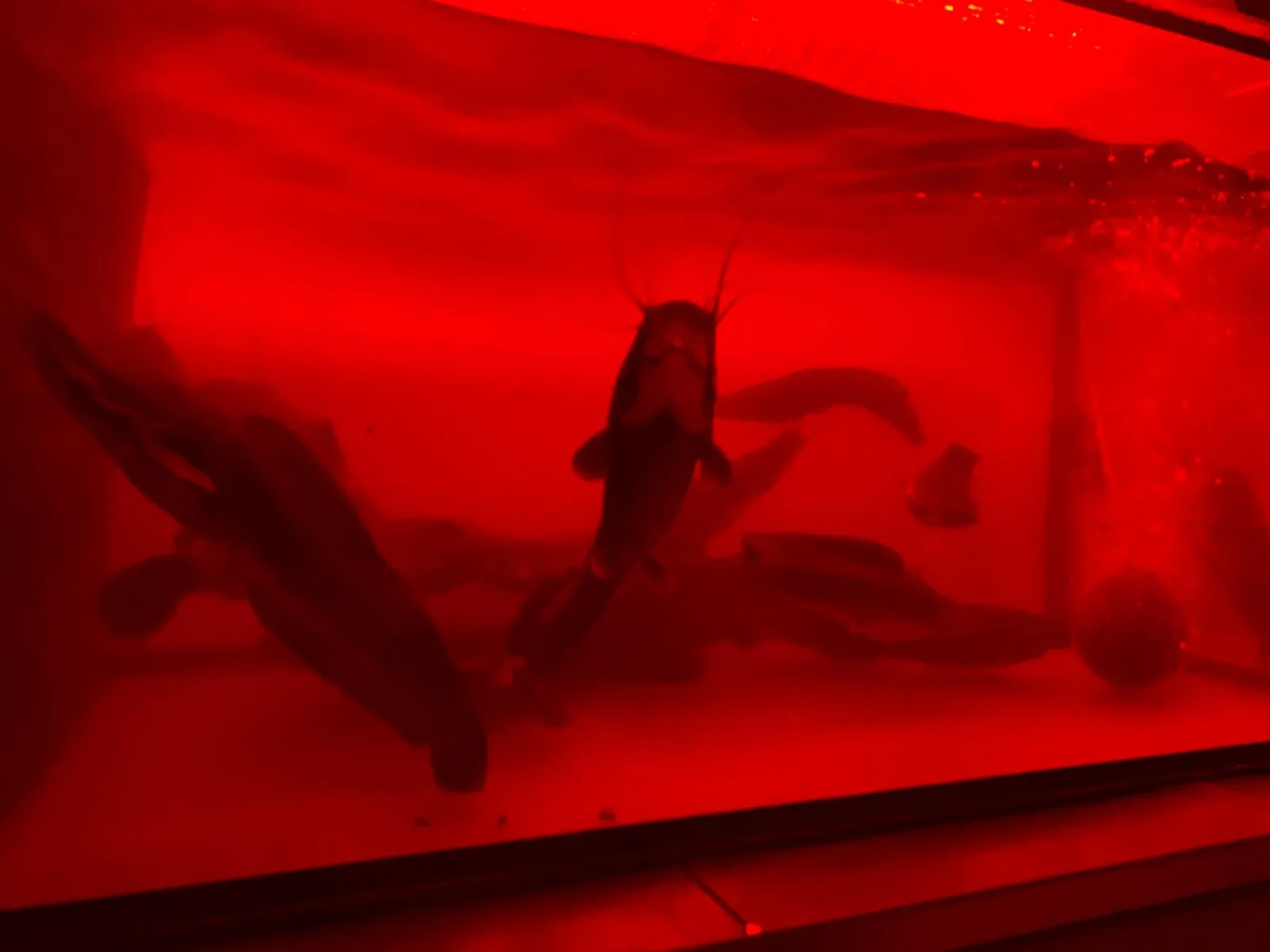Researching the Future of Sustainable Aquaculture
At the University of Rostock, Marc‑Christopher Hildebrand, a PhD candidate in the working group of Prof. Harry W. Palm, is conducting advanced research into the cultivation of the African catfish (Clarias gariepinus). This species is known for its rapid growth, resilience, and adaptability to closed-loop systems – making it a promising candidate for sustainable and efficient food production.
The overarching goal of this research is to develop optimized rearing strategies that ensure animal welfare while maximizing yield. In times of increasing demand for environmentally friendly protein sources, such approaches could play a vital role in securing future food supply chains.
Objective: Optimal environmental conditions for healthy, low-stress fish
The research focuses on how various environmental factors – especially lighting – influence the behavior, health, and growth of the fish. The findings show:
-
Under green or dimmed yellow light, the animals behave much more calmly.
-
Blue or intense light, on the other hand, triggers stress and erratic swimming – even at low intensities.
The goal is to create rearing conditions that improve fish welfare and at the same time increase the efficiency of aquaculture systems.
Flexible lighting control with GHL
To meet these demanding requirements, the researchers rely on the GHL lighting and control system:
Using the ProfiLux controller in combination with LEDControl4 modules, a wide range of light spectra and brightness levels can be precisely simulated – without hardware changes and fully automated.
This level of control allows the team to test various lighting conditions quickly and reproducibly – a key advantage in scientific research.
Additionally, the ION Director and KH Director assist in monitoring key water parameters in the recirculating system.
Relevance for aquaculture
The results are clear: Lower stress leads to better animal health, fewer losses, and improved feed conversion – all crucial factors for ecologically and economically viable fish farming.
The African catfish is particularly well-suited for this purpose: robust, fast-growing, and ideal for closed-loop systems in Europe.
Sources
-
Ostsee-Zeitung (in German): “Rostock scientists research African catfish”
-
Hildebrand et al. (2024): “The role of light in the rearing of Clarias gariepinus larvae”, Aquaculture Reports
DOI: 10.1016/j.aqrep.2024.102420
With kind permission from
Marc‑Christopher Hildebrand, University of Rostock
Many thanks for providing the photos and research insights.










